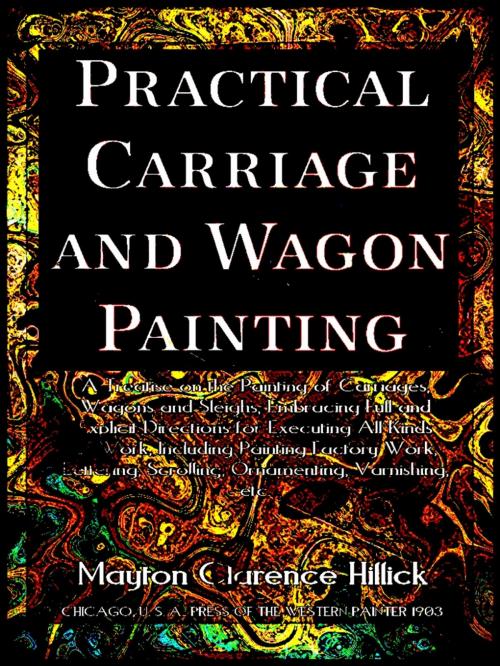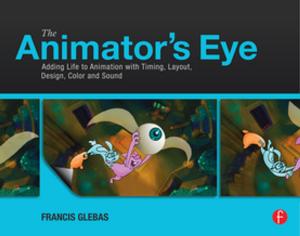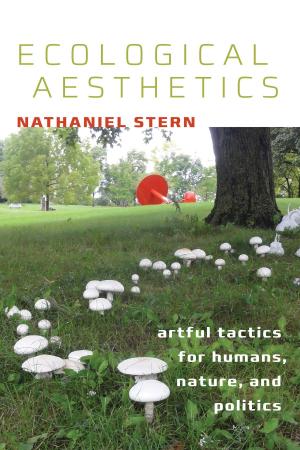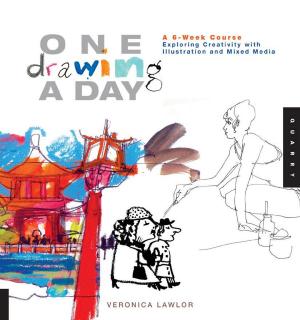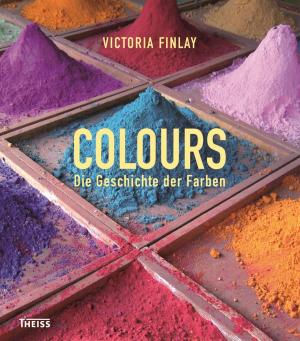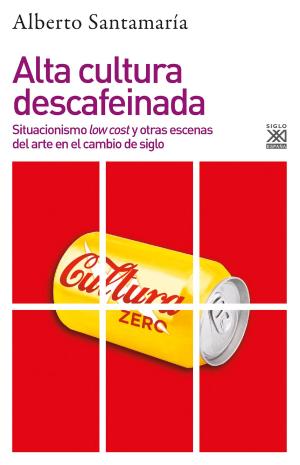Practical Carriage and Wagon Painting (Illustrations)
Nonfiction, Home & Garden, Crafts & Hobbies, Art Technique, Art & Architecture, General Art| Author: | Mayton Clarence Hillick | ISBN: | 1230000343947 |
| Publisher: | PRESS OF THE WESTERN PAINTER | Publication: | April 7, 2015 |
| Imprint: | Language: | English |
| Author: | Mayton Clarence Hillick |
| ISBN: | 1230000343947 |
| Publisher: | PRESS OF THE WESTERN PAINTER |
| Publication: | April 7, 2015 |
| Imprint: | |
| Language: | English |
Example in this ebook
In may of its elementary principles the art of carriage and wagon painting as at present exemplified does not materially differ from the art as it was interpreted in the remote past. Processes and systems have changed and adapted themselves to the swifter modes of life, but not a few of the paint materials, especially those used in the foundation and surfacing coats, remain practically the same as used in former times. The P. W. F.'s, as surfacing agents expected to take the place of white lead and oil and their assistant pigments, tossed merrily upon the topmost wave of favor for a brief period some two decades ago, but the fiat of their decline went forth and at the present time the great majority of carriage and wagon painters still adhere to white lead, raw linseed oil, ochres, and regulation roughstuff pigments for their foundation materials, as did their instructors and predecessors.
The abbreviated time allowance accorded the painter for the painting and finishing of a vehicle has made necessary a readjustment of proportions of both liquid and pigment ingredients which, it must be confessed, has operated in a way harmful to the natural durability of the material employed. The painter, however, can in no wise be held responsible for the general lack of durability which is said to distinguish the painting of the present as compared to that of the past. The great inexorable Public is the master, the painter its unwilling but submissive servant.
Nevertheless, conditions of permanency and durability are still wrought and achieved in the modern field of carriage and wagon painting, conditions which conform, with a large measure of credit to the art of painting, to the other resultant durable effects obtained along nearly all other lines of industrial activity.
Our painting today fails to excel the painting of tradition simply because the exactions of a wonderfully fast age tend directly to promote failure rather than to aid success.
The job of painting which withstands fierce and continuous attacks of service for a reasonable length of time must be justly registered durable, regardless of what it would have been termed in the past. Past conditions and circumstances cannot fairly be used as yardsticks to measure what we at present call beautiful and enduring in the art of painting.
In the matter of tools, appliances for handling work, colors and varnishes used, carriage and wagon painting, amid the advances made in all the other constructive departments of industry, has enjoyed improvement. Brushes in greater variety, finer in quality, and better adapted to the practical needs of the painter, are in evidence. Colors of a wider range of hues, tints, shades, and incomparably finer as to quality than were obtainable formerly, are now at the disposal of the painter. And the varnishes—surely they have been improved, made more reliable, more uniform in quality, better behaved and more suited to the ever-varying requirements of service.
Carnage and wagon painting has become as much of a business as an artistic venture. Commercial conditions have of late years so shaped themselves that the painter, to successfully conduct a painting business, must of necessity study the profound science of business quite as thoroughly as he does the science of building paint structures and developing color effects. He imparts a moral, business, and mechanical force to the community. He now has available sources of education more easily within his reach than at any former time. Paint trade literature, so far as it is represented in magazine form at least, is at hand to render him aid and encouragement. He is rapidly becoming better fitted to meet the expanding limits of competition, to critically analyze both the theory and practice of painting, to become, in short, a greater power for good in the community as well as a studious and original mechanic.
To be continue in this ebook
Example in this ebook
In may of its elementary principles the art of carriage and wagon painting as at present exemplified does not materially differ from the art as it was interpreted in the remote past. Processes and systems have changed and adapted themselves to the swifter modes of life, but not a few of the paint materials, especially those used in the foundation and surfacing coats, remain practically the same as used in former times. The P. W. F.'s, as surfacing agents expected to take the place of white lead and oil and their assistant pigments, tossed merrily upon the topmost wave of favor for a brief period some two decades ago, but the fiat of their decline went forth and at the present time the great majority of carriage and wagon painters still adhere to white lead, raw linseed oil, ochres, and regulation roughstuff pigments for their foundation materials, as did their instructors and predecessors.
The abbreviated time allowance accorded the painter for the painting and finishing of a vehicle has made necessary a readjustment of proportions of both liquid and pigment ingredients which, it must be confessed, has operated in a way harmful to the natural durability of the material employed. The painter, however, can in no wise be held responsible for the general lack of durability which is said to distinguish the painting of the present as compared to that of the past. The great inexorable Public is the master, the painter its unwilling but submissive servant.
Nevertheless, conditions of permanency and durability are still wrought and achieved in the modern field of carriage and wagon painting, conditions which conform, with a large measure of credit to the art of painting, to the other resultant durable effects obtained along nearly all other lines of industrial activity.
Our painting today fails to excel the painting of tradition simply because the exactions of a wonderfully fast age tend directly to promote failure rather than to aid success.
The job of painting which withstands fierce and continuous attacks of service for a reasonable length of time must be justly registered durable, regardless of what it would have been termed in the past. Past conditions and circumstances cannot fairly be used as yardsticks to measure what we at present call beautiful and enduring in the art of painting.
In the matter of tools, appliances for handling work, colors and varnishes used, carriage and wagon painting, amid the advances made in all the other constructive departments of industry, has enjoyed improvement. Brushes in greater variety, finer in quality, and better adapted to the practical needs of the painter, are in evidence. Colors of a wider range of hues, tints, shades, and incomparably finer as to quality than were obtainable formerly, are now at the disposal of the painter. And the varnishes—surely they have been improved, made more reliable, more uniform in quality, better behaved and more suited to the ever-varying requirements of service.
Carnage and wagon painting has become as much of a business as an artistic venture. Commercial conditions have of late years so shaped themselves that the painter, to successfully conduct a painting business, must of necessity study the profound science of business quite as thoroughly as he does the science of building paint structures and developing color effects. He imparts a moral, business, and mechanical force to the community. He now has available sources of education more easily within his reach than at any former time. Paint trade literature, so far as it is represented in magazine form at least, is at hand to render him aid and encouragement. He is rapidly becoming better fitted to meet the expanding limits of competition, to critically analyze both the theory and practice of painting, to become, in short, a greater power for good in the community as well as a studious and original mechanic.
To be continue in this ebook
